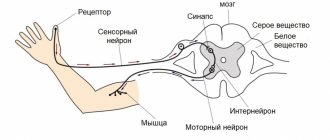Most balance problems arise from problems with the brain or inner ear, or from physical problems such as bone fractures or muscle injuries.
Balance problems can make walking difficult. They can make a person feel like everything is spinning around them.
Although many balance problems are relatively harmless, a person cannot diagnose the cause on their own.
People who have problems with balance and coordination should see a doctor if symptoms persist.
Symptoms of imbalance
Balance problems generally fall into two categories: physical injuries or neurological problems and inner ear problems.
A person with vertigo or other forms of dizziness may have trouble coordinating their movements. Their brain may not send the right signals and they may feel like the room is spinning.
In contrast, physical injuries usually cause problems with movement in certain areas of the body.
Neurological and inner ear problems
Problems with the nervous system, inner ear, or circulatory system can make it difficult to coordinate movements.
Some symptoms include feeling:
- dizziness;
- does not understand where the body is;
- worries when moving;
- the room is spinning;
- weakness or numbness on one side of the body.
Injuries
Sometimes a physical injury makes it difficult to move all or part of the body. Some symptoms include:
- muscle weakness that causes a person to fall easily;
- pain when moving, making it difficult to maintain balance;
- damage to the spinal cord, which makes it difficult or impossible to move certain parts of the body;
- strange sensations when moving;
- feeling of unsteadiness on your feet.
When a person has poor balance and feels dizzy
Okay, crying is a good thing. But thinking constructively is better. After my post about balance, several readers complained to me that they had various problems with the vestibular system, and they did not know how to treat it. I’ll write here what I now know about it. Perhaps it will be useful to someone. (Although it would be better not to use it.) First, about the most terrible and rare things. Then - about what the majority have. So, there is a very terrible disorder of the vestibular apparatus, when people really spin around and throw around.
But thinking constructively is better. After my post about balance, several readers complained to me that they had various problems with the vestibular system, and they did not know how to treat it. I’ll write here what I now know about it. Perhaps it will be useful to someone. (Although it would be better not to use it.) First, about the most terrible and rare things. Then - about what the majority have. So, there is a very terrible disorder of the vestibular apparatus, when people really spin around and throw around.
From the outside it looks as if a person was shaken by some invisible force; people within a radius of half a meter are actually spinning, falling on their sides, they cannot resist this in any way, they are being thrown down. I don’t know what this diagnosis is called in Russian, in German it is called Drehschwindel (translated as twisting dizziness). This can occur as a result of two breakdowns. The first is a hole in the eardrum (usually due to injury). The second is that the lenses that live there, detached from the general mass, fly out of the vestibular apparatus in the ear and begin to walk along the tubes that are in your ear (see the video I’m linking to here, it shows this problem, where these crystals curse, and where they should be thrown back). When an eardrum ruptures, a person usually realizes that he has suffered an injury. But if it starts “suddenly out of the blue,” then it is most likely these same wandering lenses. In both cases, this usually ends in calling an ambulance, because... people in this condition cannot sit or stand, and often feel very sick. It’s a pity that most people don’t know that this tragedy with lenses (terribly unpleasant) can often be corrected with two maneuvers. Experienced doctors do exactly this when such patients are brought to the hospital. (And when a hole in the eardrum was ruled out.) These maneuvers cannot harm a person. (Just if there is a hole in the eardrum, this will not help.) There is no need to be afraid of them. And often these stray lenses are corrected in several attempts, sometimes on the first try. You need to put the person on the side on which he feels dizziness the most, do everything as in the video above, and if you do everything correctly, the dizziness will go away right away. If it doesn’t help, repeat it a couple of times. Here: Here's more: And here's the second maneuver, which helps if the lens gets lost in another plane: But these, as already said, are rare and terrible diagnoses. In all other cases, we are talking about amorphous swaying, feelings of instability that instill terrible uncertainty in a person. This is not always even connected with the vestibular apparatus; sometimes it happens from attacks of weakness, when the legs do not hold up well or the person “shakes.” Here the range of reasons is huge. From poor vision to shaky legs, slow reactions due to a million possible neurological disorders, or something that presses on or irritates the vestibular system in the ear (swelling, inflammation). From such disorders a person very rarely truly falls off his feet! But he is very often afraid (!) that he is about to fall, and because of this he stumbles very often. And he only falls because he is scared, and he begins to walk and move terribly awkwardly, trembles, grabs something, because of this he once again shifts his center of gravity to where it is not needed, staggers even more from fear, etc. d. That is, the problem with “rolling” or imbalance is real, physical. But 90% of the suffering and danger comes from the psychological problems that accompany it. As soon as a person sways at a bad moment, falls or starts to fall in transport, or in a crowded place, his brain turns on the alarm. After this, every strange wave-like sensation in a person’s body begins to frighten, or at least alarm. And in many situations, panic (mild or even not at all mild) sets in where a person would be afraid to fall or sway. Although nothing has happened yet! In crowded places, where there is nothing to hold on to, where it is noisy and the lights are bright and/or flashing, where it is slippery, etc. Any healthy person feels all sorts of small swaying, hesitant steps, etc. a hundred times a day. He simply doesn’t notice, or says cheerfully, “Ooi,” instantly restores his balance, and doesn’t focus on it. And a person who has problems immediately starts to panic, he notices this, thinks “oh, really again,” begins to look for support, shake, etc. And his condition is getting worse. But this inner fear is not some kind of whim. It is part of a very well functioning alarm system and is difficult to disable. This is one of those “protective brain programs” that try to protect us from everything. Is something not working well? Let’s not go anywhere where it’s dangerous for you, and let’s live quietly and peacefully. This is not constructive. But the brain sometimes does this because it is the path of least resistance. Therefore, we need to work with these symptoms that undermine our psyche. Because the violation itself, which leads to vacillation, exists, but it is not dramatic. Because of it, we most likely will not fall directly onto the floor from a standing position. But from one danger we have terrible stress and fear, constantly. You can and should try to eliminate and treat the physical causes of such motion. But if they are not treated to some extent, we must learn to live with them, and this is possible. You can greatly stabilize physically if you learn to rush around less mentally. *** First, let me give you an example.
But if it starts “suddenly out of the blue,” then it is most likely these same wandering lenses. In both cases, this usually ends in calling an ambulance, because... people in this condition cannot sit or stand, and often feel very sick. It’s a pity that most people don’t know that this tragedy with lenses (terribly unpleasant) can often be corrected with two maneuvers. Experienced doctors do exactly this when such patients are brought to the hospital. (And when a hole in the eardrum was ruled out.) These maneuvers cannot harm a person. (Just if there is a hole in the eardrum, this will not help.) There is no need to be afraid of them. And often these stray lenses are corrected in several attempts, sometimes on the first try. You need to put the person on the side on which he feels dizziness the most, do everything as in the video above, and if you do everything correctly, the dizziness will go away right away. If it doesn’t help, repeat it a couple of times. Here: Here's more: And here's the second maneuver, which helps if the lens gets lost in another plane: But these, as already said, are rare and terrible diagnoses. In all other cases, we are talking about amorphous swaying, feelings of instability that instill terrible uncertainty in a person. This is not always even connected with the vestibular apparatus; sometimes it happens from attacks of weakness, when the legs do not hold up well or the person “shakes.” Here the range of reasons is huge. From poor vision to shaky legs, slow reactions due to a million possible neurological disorders, or something that presses on or irritates the vestibular system in the ear (swelling, inflammation). From such disorders a person very rarely truly falls off his feet! But he is very often afraid (!) that he is about to fall, and because of this he stumbles very often. And he only falls because he is scared, and he begins to walk and move terribly awkwardly, trembles, grabs something, because of this he once again shifts his center of gravity to where it is not needed, staggers even more from fear, etc. d. That is, the problem with “rolling” or imbalance is real, physical. But 90% of the suffering and danger comes from the psychological problems that accompany it. As soon as a person sways at a bad moment, falls or starts to fall in transport, or in a crowded place, his brain turns on the alarm. After this, every strange wave-like sensation in a person’s body begins to frighten, or at least alarm. And in many situations, panic (mild or even not at all mild) sets in where a person would be afraid to fall or sway. Although nothing has happened yet! In crowded places, where there is nothing to hold on to, where it is noisy and the lights are bright and/or flashing, where it is slippery, etc. Any healthy person feels all sorts of small swaying, hesitant steps, etc. a hundred times a day. He simply doesn’t notice, or says cheerfully, “Ooi,” instantly restores his balance, and doesn’t focus on it. And a person who has problems immediately starts to panic, he notices this, thinks “oh, really again,” begins to look for support, shake, etc. And his condition is getting worse. But this inner fear is not some kind of whim. It is part of a very well functioning alarm system and is difficult to disable. This is one of those “protective brain programs” that try to protect us from everything. Is something not working well? Let’s not go anywhere where it’s dangerous for you, and let’s live quietly and peacefully. This is not constructive. But the brain sometimes does this because it is the path of least resistance. Therefore, we need to work with these symptoms that undermine our psyche. Because the violation itself, which leads to vacillation, exists, but it is not dramatic. Because of it, we most likely will not fall directly onto the floor from a standing position. But from one danger we have terrible stress and fear, constantly. You can and should try to eliminate and treat the physical causes of such motion. But if they are not treated to some extent, we must learn to live with them, and this is possible. You can greatly stabilize physically if you learn to rush around less mentally. *** First, let me give you an example. Remember the good times when you had better balance in your life. Surely this has happened to you. (Even if it's from childhood - not very much.) Do you remember how you acted when you were 5 years old and you wanted to race outside in the summer? Sometimes you swayed or staggered somewhere, stumbled, and did not attach any importance to it. We tried with all our might to restore balance. Sometimes it worked, sometimes it didn’t. In the worst case scenario, you fell, but no one died from that either. But most often you sat down or grabbed something, stopped in a strange position, that’s all. This is the state you need to return to. Psychologically. Or get back as close to it as possible. To do this, first prepare to fall. Because of my eyesight, I have fallen five times in the last year. It just flew and completely stretched out, flying over a high obstacle a couple of times. The first time I was flying, for a split second I thought: “That’s it, I’m going to break my arm.” Then I remembered what I had to do so as not to break it. You should try to fall diagonally, turn your shoulder forward, and press your arms to your body. If necessary and possible, cover your face with your hands if you are already flying face forward somewhere. But in general, try to turn your face and overall front away from the floor. To crash diagonally onto some shoulder. I remembered all this, turned sideways, landed well, got a bruise, but didn’t break anything. The other times I fell even better. Of course, there is some luck in this. Sometimes the most athletic person manages to screw up in such a way that he gets seriously injured. (A tragic example is Michael Schumacher, there is probably no more athletic person in the world, slipped on a stone under the snow, and it ended in tragedy, one meter from a flat path.) But the more calm and willingness to work with the situation, the greater the chances of not getting hurt . Think and make plans. What will I do if I start to fall? What needs to be turned away from the ground, what to protect, what to try not to break. Watch videos on YouTube for beginner skateboarders and parkourists, they teach you how to fall. I'm serious, it will help you a lot. Remember, this knowledge will come out if you suddenly fly. And the fear will be less if you come to terms with the idea that you can fall, and it won’t kill you, no big deal. By the way, in social terms everything is not so scary. When I crawled out of the gym during training, everyone noticed it, but by the next training a day later, almost everyone had forgotten. This is important because many people (the older they get, the worse it is) begin to walk around the world and constantly think: “Oh, what if I fall,” while making this some kind of tragedy on a universal scale.
Remember the good times when you had better balance in your life. Surely this has happened to you. (Even if it's from childhood - not very much.) Do you remember how you acted when you were 5 years old and you wanted to race outside in the summer? Sometimes you swayed or staggered somewhere, stumbled, and did not attach any importance to it. We tried with all our might to restore balance. Sometimes it worked, sometimes it didn’t. In the worst case scenario, you fell, but no one died from that either. But most often you sat down or grabbed something, stopped in a strange position, that’s all. This is the state you need to return to. Psychologically. Or get back as close to it as possible. To do this, first prepare to fall. Because of my eyesight, I have fallen five times in the last year. It just flew and completely stretched out, flying over a high obstacle a couple of times. The first time I was flying, for a split second I thought: “That’s it, I’m going to break my arm.” Then I remembered what I had to do so as not to break it. You should try to fall diagonally, turn your shoulder forward, and press your arms to your body. If necessary and possible, cover your face with your hands if you are already flying face forward somewhere. But in general, try to turn your face and overall front away from the floor. To crash diagonally onto some shoulder. I remembered all this, turned sideways, landed well, got a bruise, but didn’t break anything. The other times I fell even better. Of course, there is some luck in this. Sometimes the most athletic person manages to screw up in such a way that he gets seriously injured. (A tragic example is Michael Schumacher, there is probably no more athletic person in the world, slipped on a stone under the snow, and it ended in tragedy, one meter from a flat path.) But the more calm and willingness to work with the situation, the greater the chances of not getting hurt . Think and make plans. What will I do if I start to fall? What needs to be turned away from the ground, what to protect, what to try not to break. Watch videos on YouTube for beginner skateboarders and parkourists, they teach you how to fall. I'm serious, it will help you a lot. Remember, this knowledge will come out if you suddenly fly. And the fear will be less if you come to terms with the idea that you can fall, and it won’t kill you, no big deal. By the way, in social terms everything is not so scary. When I crawled out of the gym during training, everyone noticed it, but by the next training a day later, almost everyone had forgotten. This is important because many people (the older they get, the worse it is) begin to walk around the world and constantly think: “Oh, what if I fall,” while making this some kind of tragedy on a universal scale. It turns into some kind of mythical event, just horror and a nightmare, no one knows what exactly will happen when you fall, but they wind themselves up with confidence that this is just the worst thing that can happen. Yes, falling is unpleasant and useless. But there is no need to create such an image of some kind of nightmare that haunts you in everyday life. Falling is still a rare event. And (almost always) - not fatal. And if you prepare for it in advance, it will go better.
It turns into some kind of mythical event, just horror and a nightmare, no one knows what exactly will happen when you fall, but they wind themselves up with confidence that this is just the worst thing that can happen. Yes, falling is unpleasant and useless. But there is no need to create such an image of some kind of nightmare that haunts you in everyday life. Falling is still a rare event. And (almost always) - not fatal. And if you prepare for it in advance, it will go better. *** And now - about one of my main discoveries on this matter. (I didn’t figure it out on my own, the doctors helped me, but still.) Observe yourself when this wave of uncertainty comes over you, this feeling when something in your body goes limp, you sway, the ground shakes beneath you, the support leaves you. underfoot, and it became scary. This will always be the moment when you felt your body the least. This is treated with other pronounced physical sensations that interrupt this sensation. In fact, all these sensations of motion are very subtle. Pinch yourself on the arm and you'll eclipse that amorphous wave right there! This is how it is treated. Stand up (if you were sitting), move your legs very, very strongly, for example, turn your foot, so that you can feel the whole leg strongly. Bend your leg a couple of times so that your heel touches your butt (or almost). Apply a few firm strokes to your hand, as if you were doing a massage. As soon as you do something like this, you will be surprised that before this your bodily sensations were greatly muted, and you did not feel your body. And then you will notice that these sensations distracted you from pumping. It really helps to feel unsteady on your feet - to feel your strength! First of all, in the legs. I've learned over the past month that my best sedative and instant stress reliever is 50-60 squats! You begin to feel your legs, you realize that they are holding you well, and the entire nervous system registers this and immediately calms down. If you are so swayed that active dynamic squats make you sway even more, just spread your legs wider, squat as low as possible, and do small squats down there. Just to make it difficult and give you a good feeling in your legs. What helps even more to turn off this bad feeling is a feeling of strength, stability and tone in the rest of the body. A straight back, a toned stomach, a confident springy gait. If you don't have this, do it! Pull yourself up, brace yourself, tighten your muscles. And in general, if you have problems with the vestibular system, do core stabilizing exercises, they will significantly improve your condition and sense of self. Many people don't like this recipe. But even here the most useful exercises are squats, planks, push-ups, pull-ups. A significant part of your problem is fear and uncertainty, instability. Therefore, any noticeable increase in stability in the muscles will simply calm you down! Many people with such problems begin to walk with their legs wide apart and their knees slightly bent (I started too). This seems like a more stable position, but it's not true! In fact, this is a very incorrect and unhealthy body position, and in this position your risk of falling is much greater. You must still try to walk with your feet close together, with a springy gait, constantly “catching” any distortions with the entire musculoskeletal system, and correcting them as you go. In addition, walking too economically and avoiding any movements weakens the muscles. Train! Don't hang on the railing, train yourself to let your legs carry you. Don't lean on everything, stand, support yourself with the strength of your muscles. Trying to constantly look for balance, learn to smoothly move your shoulders and pelvis in all directions, balance with your arms and legs, work with your knees, but move your head less! The head should hang as little as possible so that you can fix your gaze. Try to stay at the same height. And catch everything at the level of the hips and knees! To practice this, you can exercise when you feel good. Try to rotate all parts of your body without moving your head at all! Get yourself a roller that you ride on with your back (for fascia massage).
*** And now - about one of my main discoveries on this matter. (I didn’t figure it out on my own, the doctors helped me, but still.) Observe yourself when this wave of uncertainty comes over you, this feeling when something in your body goes limp, you sway, the ground shakes beneath you, the support leaves you. underfoot, and it became scary. This will always be the moment when you felt your body the least. This is treated with other pronounced physical sensations that interrupt this sensation. In fact, all these sensations of motion are very subtle. Pinch yourself on the arm and you'll eclipse that amorphous wave right there! This is how it is treated. Stand up (if you were sitting), move your legs very, very strongly, for example, turn your foot, so that you can feel the whole leg strongly. Bend your leg a couple of times so that your heel touches your butt (or almost). Apply a few firm strokes to your hand, as if you were doing a massage. As soon as you do something like this, you will be surprised that before this your bodily sensations were greatly muted, and you did not feel your body. And then you will notice that these sensations distracted you from pumping. It really helps to feel unsteady on your feet - to feel your strength! First of all, in the legs. I've learned over the past month that my best sedative and instant stress reliever is 50-60 squats! You begin to feel your legs, you realize that they are holding you well, and the entire nervous system registers this and immediately calms down. If you are so swayed that active dynamic squats make you sway even more, just spread your legs wider, squat as low as possible, and do small squats down there. Just to make it difficult and give you a good feeling in your legs. What helps even more to turn off this bad feeling is a feeling of strength, stability and tone in the rest of the body. A straight back, a toned stomach, a confident springy gait. If you don't have this, do it! Pull yourself up, brace yourself, tighten your muscles. And in general, if you have problems with the vestibular system, do core stabilizing exercises, they will significantly improve your condition and sense of self. Many people don't like this recipe. But even here the most useful exercises are squats, planks, push-ups, pull-ups. A significant part of your problem is fear and uncertainty, instability. Therefore, any noticeable increase in stability in the muscles will simply calm you down! Many people with such problems begin to walk with their legs wide apart and their knees slightly bent (I started too). This seems like a more stable position, but it's not true! In fact, this is a very incorrect and unhealthy body position, and in this position your risk of falling is much greater. You must still try to walk with your feet close together, with a springy gait, constantly “catching” any distortions with the entire musculoskeletal system, and correcting them as you go. In addition, walking too economically and avoiding any movements weakens the muscles. Train! Don't hang on the railing, train yourself to let your legs carry you. Don't lean on everything, stand, support yourself with the strength of your muscles. Trying to constantly look for balance, learn to smoothly move your shoulders and pelvis in all directions, balance with your arms and legs, work with your knees, but move your head less! The head should hang as little as possible so that you can fix your gaze. Try to stay at the same height. And catch everything at the level of the hips and knees! To practice this, you can exercise when you feel good. Try to rotate all parts of your body without moving your head at all! Get yourself a roller that you ride on with your back (for fascia massage). And when you feel really bad, ride it. It also enhances sensations throughout the body and distracts from all sorts of amorphous movements. Do not buy shoes with particularly soft, puffy, airy soles. And don’t put fashionable thick gel insoles in your shoes. They increase the feeling of instability. If you get swayed, try very hard NOT to grab onto anything (if at all possible). Restore your balance without support. Why? Because usually a person reaches for the nearest handle or something like that, and in order to reach it, he gets into a completely stupid position in which the center of gravity is unnaturally shifted. As a result, he fixes himself in an unstable position. Then you still have to get out of it. This is a lot of stress. If you manage to stabilize yourself without grabbing anything, you will end up in a truly stable position, with only your legs holding you up. Let you bend your knees and wave your arms in some strange way. But it was your legs that held you up, and you are standing. This is success. And this is a good position from which you can immediately move on. If you feel a wave of motion, don't stop! Most often, people become stiff at this moment and press their entire feet against the floor with all their might! This immediately makes everything worse! Watch yourself. In ordinary life, you almost never stand like this, resting your entire leg on the floor! This is an unstable situation. Balance is restored when the body springs! When it moves, swims, and looks for a point where everything will converge. Therefore, if you have an attack of dizziness and you are standing or walking, do not freeze! Stand with your feet shoulder-width apart and rock slightly from side to side. If you are walking, try to move on, in small but confident steps. Don't stay on the ground for too long, keep moving to find your balance. Move your center of gravity from one leg to the other, constantly! You will find it in a couple of steps, and if you stop, excitement will come. If it sways really hard and doesn’t want to let go right away, put your feet shoulder-width apart, squat down as if you did half a squat, put your hands on your knees, and shift from foot to foot. This is a stable position, it is difficult to fall from it, and it is not scary to fall, because you already feel close to the floor. In this position, swinging, it is easy to find balance. When it gets better, straighten up, but don't stop shifting from foot to foot, don't stand still. If the most incredible and rare thing happens, and you do feel like you are falling (but this is very unlikely), do not fall forward, fall on your side. Firstly, if you try to move your fall to the side, you will most likely stop it. It is not so easy to fall on your side from this pose. You have to fall very far over the center of gravity. Secondly, if a rare miracle does happen and you fall, you will not break your arms, nose or knees. (But I have already experienced very unstable moments in this pose, and I can assure you that it is really difficult to fall from this pose; you probably have to lose consciousness in order to fall.) Fix one point and look at it. Not 100% strict - don't panic if there's still something moving in your field of vision. But just don’t turn your head temporarily, and when you turn your body, try not to take your eyes off what you’re fixating on. It also helps a lot to put your hands on your cheeks. Hold your cheeks tightly, place your hands so that your index finger is behind your ear. As if hug your own face. Or place your index fingers on your temples. Touch your face a little with pressure (but don’t slap your cheeks!), then put your hands behind the scruff of your neck and pat your own neck. This calms the vestibular apparatus. But you don’t need to stick your fingers in your ears, even if you think it might make things easier. All sorts of bodywork experts say that 80% of all dizziness and all sorts of “uncertain, unpleasant, cloudy sensations in the body” are associated with breathing and blood supply disorders. Those. you need to learn to breathe deeply, not occasionally, but in everyday life. Straighten your chest more often, sit straighter, wave your arms, look for distortions in your body. Maybe you somehow curl up often and curl up towards your stomach, or for other reasons you breathe poorly and shallowly. In any case, when you feel worse, you should remember this and breathe! Breathe deeply! Many people are afraid that if they breathe a lot and forcefully, hyperventilation will occur, and this will make them even more dizzy. Yes, but to get this, you have to breathe in a panic! And if you just take a deep breath a couple of times, straighten your shoulders, try to breathe well with your stomach, you will definitely feel better! If you develop panic due to loss of balance, remind yourself that it will pass in a few minutes, and you just need to wait. And remember that you can talk to your own head, and it may even believe you. But do not say nonsense (the brain is not a fool). Many sway and persuade themselves "does not download me, it only seems to me." These are enemies and it is pointless to persuade yourself in this. We must say “it shakes me, but it is safe”, and “my legs and my body hold me well enough, I am on my feet”, and “balance will recover again now”. Harm the answers that do not meet “not” (do you remember this rule?). And train. If some situation plunges you into terrible stress, “desensitization” will help you. Passed by this stress more often in more or less tolerant doses, and the nervous system will begin to get used to, find ways to cope with it. If you dodge him, it will become worse. Those. If it’s hard and scary to walk along the street, go more often! The more and longer you will be there, the easier it will be. Do not hide at home! Try to ride in the transport standing, and sometimes do not hold on to the handles. If you are walking somewhere along the street, and everything is laid out with even tiles, try to go in a straight line, focusing on the tile. Try to walk on a low side (you will not be killed, but you will practice in the fight against fear). Try to stand on one leg more often. Fighting horror and fear, and stand on something thick and soft. For example, on the bent edge of the rug for yoga, or at least on the slippage lying on the floor. Tolerate, fear will let go in a couple of seconds. And train the speed of movements and reaction. Problems with the balance are aggravated by those who are slowly reacting, too slowly breaking away from some point. Try to just make some movements with your hands and feet quickly! Faster than you are used to! Much! Picture boxes with air with fists. Try to pretend to be kicking a football ball with your foot. And get yourself a couple of balls of different sizes, and try to throw them and catch them more often, learn to juggle, try to kick the ball with your foot, and then catch with your hand. Even if nothing happens. The very fact that you are trying to make a rapid movement, trains you in this direction. If you are able to play badminton or tennis with someone, or at least wandering around a flying saucer, it would be generally chic-try it! Well, any (even the most clumsy) attempts to dance help. Good luck to everyone, and I wish that in fact this secret knowledge would not be useful to anyone!
And when you feel really bad, ride it. It also enhances sensations throughout the body and distracts from all sorts of amorphous movements. Do not buy shoes with particularly soft, puffy, airy soles. And don’t put fashionable thick gel insoles in your shoes. They increase the feeling of instability. If you get swayed, try very hard NOT to grab onto anything (if at all possible). Restore your balance without support. Why? Because usually a person reaches for the nearest handle or something like that, and in order to reach it, he gets into a completely stupid position in which the center of gravity is unnaturally shifted. As a result, he fixes himself in an unstable position. Then you still have to get out of it. This is a lot of stress. If you manage to stabilize yourself without grabbing anything, you will end up in a truly stable position, with only your legs holding you up. Let you bend your knees and wave your arms in some strange way. But it was your legs that held you up, and you are standing. This is success. And this is a good position from which you can immediately move on. If you feel a wave of motion, don't stop! Most often, people become stiff at this moment and press their entire feet against the floor with all their might! This immediately makes everything worse! Watch yourself. In ordinary life, you almost never stand like this, resting your entire leg on the floor! This is an unstable situation. Balance is restored when the body springs! When it moves, swims, and looks for a point where everything will converge. Therefore, if you have an attack of dizziness and you are standing or walking, do not freeze! Stand with your feet shoulder-width apart and rock slightly from side to side. If you are walking, try to move on, in small but confident steps. Don't stay on the ground for too long, keep moving to find your balance. Move your center of gravity from one leg to the other, constantly! You will find it in a couple of steps, and if you stop, excitement will come. If it sways really hard and doesn’t want to let go right away, put your feet shoulder-width apart, squat down as if you did half a squat, put your hands on your knees, and shift from foot to foot. This is a stable position, it is difficult to fall from it, and it is not scary to fall, because you already feel close to the floor. In this position, swinging, it is easy to find balance. When it gets better, straighten up, but don't stop shifting from foot to foot, don't stand still. If the most incredible and rare thing happens, and you do feel like you are falling (but this is very unlikely), do not fall forward, fall on your side. Firstly, if you try to move your fall to the side, you will most likely stop it. It is not so easy to fall on your side from this pose. You have to fall very far over the center of gravity. Secondly, if a rare miracle does happen and you fall, you will not break your arms, nose or knees. (But I have already experienced very unstable moments in this pose, and I can assure you that it is really difficult to fall from this pose; you probably have to lose consciousness in order to fall.) Fix one point and look at it. Not 100% strict - don't panic if there's still something moving in your field of vision. But just don’t turn your head temporarily, and when you turn your body, try not to take your eyes off what you’re fixating on. It also helps a lot to put your hands on your cheeks. Hold your cheeks tightly, place your hands so that your index finger is behind your ear. As if hug your own face. Or place your index fingers on your temples. Touch your face a little with pressure (but don’t slap your cheeks!), then put your hands behind the scruff of your neck and pat your own neck. This calms the vestibular apparatus. But you don’t need to stick your fingers in your ears, even if you think it might make things easier. All sorts of bodywork experts say that 80% of all dizziness and all sorts of “uncertain, unpleasant, cloudy sensations in the body” are associated with breathing and blood supply disorders. Those. you need to learn to breathe deeply, not occasionally, but in everyday life. Straighten your chest more often, sit straighter, wave your arms, look for distortions in your body. Maybe you somehow curl up often and curl up towards your stomach, or for other reasons you breathe poorly and shallowly. In any case, when you feel worse, you should remember this and breathe! Breathe deeply! Many people are afraid that if they breathe a lot and forcefully, hyperventilation will occur, and this will make them even more dizzy. Yes, but to get this, you have to breathe in a panic! And if you just take a deep breath a couple of times, straighten your shoulders, try to breathe well with your stomach, you will definitely feel better! If you develop panic due to loss of balance, remind yourself that it will pass in a few minutes, and you just need to wait. And remember that you can talk to your own head, and it may even believe you. But do not say nonsense (the brain is not a fool). Many sway and persuade themselves "does not download me, it only seems to me." These are enemies and it is pointless to persuade yourself in this. We must say “it shakes me, but it is safe”, and “my legs and my body hold me well enough, I am on my feet”, and “balance will recover again now”. Harm the answers that do not meet “not” (do you remember this rule?). And train. If some situation plunges you into terrible stress, “desensitization” will help you. Passed by this stress more often in more or less tolerant doses, and the nervous system will begin to get used to, find ways to cope with it. If you dodge him, it will become worse. Those. If it’s hard and scary to walk along the street, go more often! The more and longer you will be there, the easier it will be. Do not hide at home! Try to ride in the transport standing, and sometimes do not hold on to the handles. If you are walking somewhere along the street, and everything is laid out with even tiles, try to go in a straight line, focusing on the tile. Try to walk on a low side (you will not be killed, but you will practice in the fight against fear). Try to stand on one leg more often. Fighting horror and fear, and stand on something thick and soft. For example, on the bent edge of the rug for yoga, or at least on the slippage lying on the floor. Tolerate, fear will let go in a couple of seconds. And train the speed of movements and reaction. Problems with the balance are aggravated by those who are slowly reacting, too slowly breaking away from some point. Try to just make some movements with your hands and feet quickly! Faster than you are used to! Much! Picture boxes with air with fists. Try to pretend to be kicking a football ball with your foot. And get yourself a couple of balls of different sizes, and try to throw them and catch them more often, learn to juggle, try to kick the ball with your foot, and then catch with your hand. Even if nothing happens. The very fact that you are trying to make a rapid movement, trains you in this direction. If you are able to play badminton or tennis with someone, or at least wandering around a flying saucer, it would be generally chic-try it! Well, any (even the most clumsy) attempts to dance help. Good luck to everyone, and I wish that in fact this secret knowledge would not be useful to anyone!
Causes
Many factors can cause loss of balance.
Dizziness
Dizziness is a set of symptoms, not a diagnosis.
It is common, with approximately 20–30% of people experiencing symptoms at some point in their lives. This can make people feel like they are spinning or losing their balance, which can lead to falling.
People with inner ear problems are more vulnerable to dizziness because the inner ear is a key source of a person's sense of balance.
One common trigger for dizziness is benign paroxysmal positional vertigo. About 50% of all people will experience this condition at some point in their lives.
Another cause of vertigo is Meniere's disease, a disease that affects the inner ear, causing dizziness and hearing problems.
Dizziness can also occur when tiny crystals inside the inner ear move out of place, disrupting your balance. A doctor can help put them back in place.
Brain injury
Brain injuries can affect balance and mobility.
People who have suffered a traumatic brain injury or concussion may have balance problems. They may appear immediately after the injury or appear several weeks or months later.
Balance problems after a fall or car accident are a medical emergency.
Treatment depends on many factors, but physical therapy and occupational therapy often help.
Spinal cord injury
A spinal cord injury damages the spinal cord. This makes it difficult, and sometimes impossible, for the brain to send messages to the body.
Depending on the severity of the injury, this can cause problems with balance and mobility or can completely paralyze the person.
Treatment for spinal cord injury depends on the severity and location. Some injuries cannot be treated. And some may recover after surgery and physical rehabilitation.
Chronic diseases
Numerous chronic and progressive diseases can impair balance and coordination.
Multiple sclerosis is one of the most common. This occurs when the body attacks the protective covering of the nerves, causing progressive damage that can lead to serious problems with mobility and balance.
Parkinson's disease, which also gradually affects balance, can lead to falls or loss of balance.
Amyotrophic lateral sclerosis (ALS), sometimes called Lou Gehrig's disease, gradually damages nerve cells.
This makes voluntary movements such as walking difficult. Balance problems may appear before other symptoms.
Treatment for chronic diseases varies. Most progressive diseases have no cure, but treatment and rehabilitation can slow the progression of the disease.
Stroke
A stroke occurs when blood flow to the brain is temporarily stopped or slowed down. This can damage brain tissue and impair the brain's ability to communicate with the body.
Some people have balance problems during or after a stroke.
A stroke is a medical emergency. A person should seek emergency medical help if they experience numbness on one side of the body, a drooping face, and stroke-like symptoms.
Removing the blockage may reduce the risk of long-term brain damage. To recover from a stroke, a person may need medications and physical therapy.
Migraine
Migraine is a neurological headache that can affect vision, cause nausea, or cause unusual visual or auditory sensations.
Some people experience vestibular migraines. These headaches affect the vestibular system, which is responsible for balance.
Medicines or lifestyle changes may help relieve symptoms.
Age
Balance usually decreases with age.
While age does not necessarily cause balance problems, many lifestyle and health factors can play a role.
As people age, they may become more sedentary as their muscle mass decreases. This can make walking difficult, which can cause balance problems.
As a person ages, it may be more difficult to recover from injuries, which can worsen pre-existing balance problems.
Medicines
Any drug that changes brain function can affect balance.
For example, sleeping pills can make people feel slower and sluggish, causing dizziness.
Alcohol and drugs can also make walking difficult.
Almost any medicine has the potential to cause dizziness, although it is more common with certain medications, including:
- alcohol and illicit drugs;
- beta blockers;
- sedative medicine;
- some antibiotics;
- antidepressants;
- antipsychotic drugs;
- hypnotic.
Passive lifestyle
A sedentary lifestyle by itself does not cause serious balance problems. However, people who are usually inactive may find that they have problems with balance.
This may be especially true for older adults or people with other balance problems.
Balance is a skill that takes practice. Regular physical activity and balance exercises can help a person improve their coordination.
Injuries
Any physical injury has the potential to affect balance, especially when it makes it difficult to coordinate movements.
Sometimes injuries cause chronic pain or loss of strength, leading to long-term balance problems.
What are dizziness and imbalance and what is the mechanism of their occurrence?
Dizziness and imbalance are common complaints that occur in 20-30% of adults and tens of percent of children.
They are much more common in women and older people. The balance system consists of several sense organs: the vestibular apparatus, the organ of vision, the joint-muscular sense (proprioception), where receptors sensitive to pressure, stretching, tension in muscles and tendons allow us to assess the position of our limbs when our eyes are closed or when we are in the dark. Information from these various systems reaches the central nervous system. After analyzing this information, excitatory impulses are sent to the oculomotor and skeletal muscles, which causes stabilization of the gaze and balance in different positions of the head and body.
True (systemic, vestibular) dizziness
It is difficult to accurately define the concept of “dizziness.” Most often, this concept refers to two different types of symptoms. Firstly, these can be illusions of rotation, swing, lifting of the environment in relation to the body or the body in relation to the environment, without an external cause of movement. This is true dizziness, called systemic. Appears suddenly, often accompanied by nausea, sometimes vomiting, and unsteady gait. The patient can accurately describe his symptoms.
Non-systemic (non-vestibular, false) dizziness
With the second type of dizziness, the patient experiences the illusion of instability, unsteadiness of gait, lack of balance, and fear of falling. This is non-systemic dizziness. In this case, the patient may find it difficult to describe his symptoms.
Other causes of dizziness
The above division follows from the fact that dizziness is the result of disorders of a very complex vestibular system, which is divided into central and peripheral parts. The peripheral part is the vestibular apparatus (vestibule) with its innervation, while the central part is the vestibular nuclei in the brain stem, the cerebellum, the cerebral cortex, as well as their connections. In addition, a feeling of dizziness may accompany lightheadedness; in such a situation, the patient additionally complains of dark spots (floaters) before the eyes, “ringing” in the ears, pale skin, sweating, but no loss of consciousness occurs. In addition, a feeling of instability and uncertainty can occur with decreased visual acuity in old age, damage to the musculoskeletal system, such as paresis, slowing of movements, impaired coordination of limb movements, or damage to deep sensitivity.
Diagnostics
Diagnosing balance problems usually begins with a review of the person's medical history. The doctor may also do several tests, including:
- use balance tests to see how well a person moves;
- blood test for infections;
- researching injuries to see how they affect movement;
- ask the person to keep a log of dizzy episodes;
- ordering x-rays or other tests to look for injuries and broken bones.










